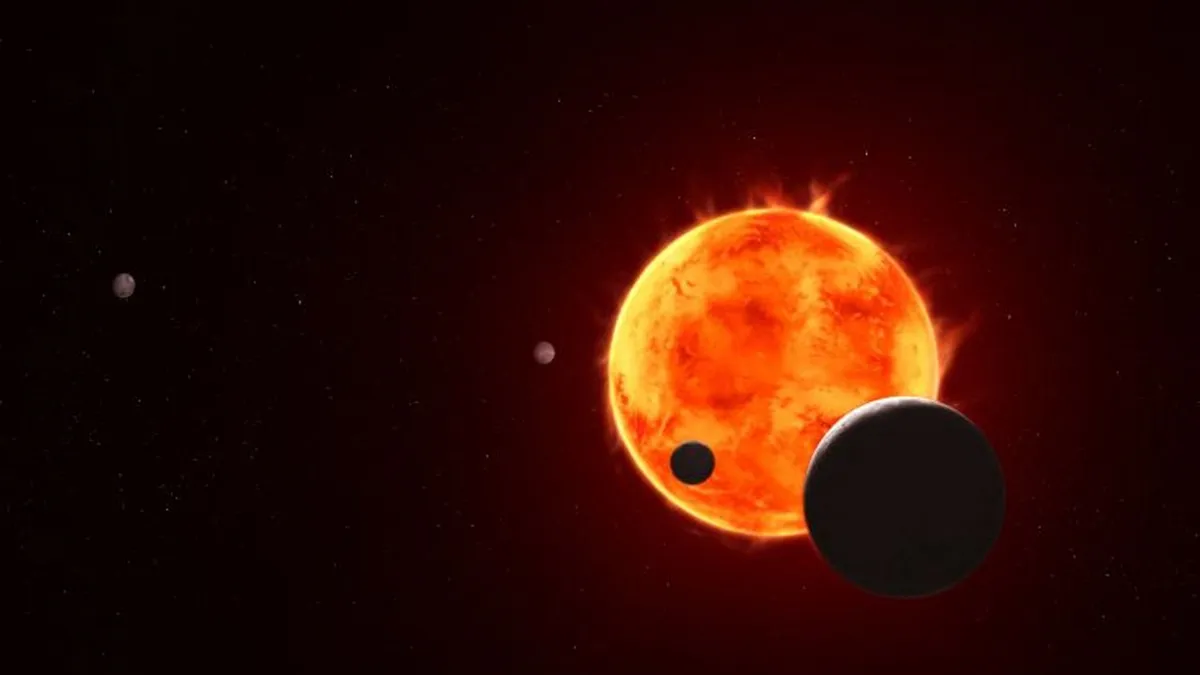
The renowned James Webb Space Telescope has made significant strides in unveiling the mysteries of the universe, and a recent breakthrough from the University of St. Andrews has taken this exploration to new heights. Groundbreaking research has identified signs of a possible atmosphere surrounding the Earth-sized exoplanet TRAPPIST-1e, located a mere 40 light years away from our solar system. This discovery has ignited excitement among astronomers, as it suggests the potential for habitable conditions beyond Earth for the first time.
In two separate papers published in early September in the Astrophysical Journal Letters, researchers have illuminated the characteristics of TRAPPIST-1e. The planet is believed to possess liquid water, potentially in the form of a global ocean or icy surface, adding to its intrigue. Situated within the habitable zone of the red dwarf star system TRAPPIST-1, this planet presents a unique opportunity for the study of extraterrestrial environments.
TRAPPIST-1e is particularly captivating due to the theoretical viability of liquid water existing on its surface, contingent upon the presence of an atmosphere. Initial findings indicate several possible scenarios regarding the atmosphere of TRAPPIST-1e, highlighting its significance in the ongoing search for habitable conditions beyond our planet.
Currently, scientists search for signs of life not by directly looking for it, but by identifying chemical compounds associated with metabolic processes. In this context, the presence of an atmosphere serves as a crucial indicator in the quest for evidence of life. Dr. Ryan MacDonald, a Lecturer in Extrasolar Planets at the University of St. Andrews, explains, “TRAPPIST-1e has long been considered one of the best habitable zone planets to search for an atmosphere.” He further noted the challenges posed by the contamination of data from the system’s red dwarf star, which complicated the search for an atmosphere.
The research team utilized the James Webb Space Telescope's advanced NIRSpec (Near-Infrared Spectrograph) instrument to analyze TRAPPIST-1e as it transited in front of its host star. During this transit, starlight passing through the planet's atmosphere will be partially absorbed, with changes in the light spectrum allowing astronomers to identify the chemicals present. The team dedicated over a year to meticulously correcting data for stellar contamination before honing in on the potential atmospheric signatures of TRAPPIST-1e.
Dr. MacDonald, who played a pivotal role in the analysis of TRAPPIST-1e's spectrum, highlighted two intriguing possibilities stemming from the research. “The most exciting possibility is that TRAPPIST-1e could have a so-called secondary atmosphere containing heavy gases like nitrogen,” he stated. However, he cautioned that the initial observations cannot entirely rule out the existence of a bare rock planet devoid of an atmosphere.
Moving forward, the researchers are planning further observations with the James Webb Space Telescope to conduct a more thorough search for an atmosphere. Each subsequent transit observation, where the planet passes in front of its star, will provide clearer insights into the atmospheric composition of TRAPPIST-1e. “In the coming years, we will increase our JWST observations of TRAPPIST-1e from four to nearly twenty. We finally have the telescope and tools to search for habitable conditions in other star systems, making this an exhilarating time for astronomy,” added MacDonald.